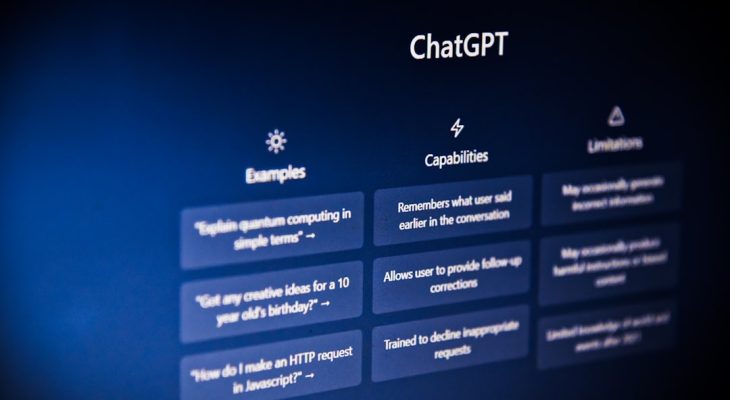In recent years, the world of copywriting has undergone a seismic shift, largely driven by advances in artificial intelligence. What was once a craft dominated exclusively by the human touch is now being augmented—and in some cases transformed—by sophisticated AI tools capable of generating compelling, dynamic copy in a matter of seconds. As we stand on the brink of an even more technologically integrated future, it’s crucial to understand how AI is shaping the field of copywriting and what that means for writers, businesses, and consumers alike.
The Rise of AI in Copywriting
Artificial intelligence in copywriting is not just a futuristic concept—it’s already here. Tools like ChatGPT, Jasper AI, Copy.ai, and others are being widely adopted by marketers, entrepreneurs, and freelance writers. These platforms utilize natural language processing (NLP) and machine learning (ML) to generate text that often mimics human writing with striking accuracy.
The appeal of these tools lies in their ability to:
- Boost productivity: AI can produce large volumes of content in minutes.
- Ensure consistency: Branding and tone-of-voice guidelines can be maintained more easily.
- Reduce costs: Businesses save time and money by automating repetitive writing tasks.
Perhaps most importantly, AI is democratizing access to quality writing. Small businesses and startups that may not have the budget for professional copywriters can now produce engaging content with minimal experience or resources.
Current Capabilities of AI Writing Tools
Modern AI copywriting tools are capable of handling a wide range of content types, including:
- Blog posts
- Social media captions
- Email marketing campaigns
- Product descriptions
- Website landing pages
These tools often come with built-in templates and suggestions to help users craft messages tailored to their target audience. With just a few prompts, AI can generate content that’s clear, concise, and persuasive.
However, while the technology has come a long way, it’s not without its limitations. AI often lacks genuine emotional intelligence and may struggle with nuance, sarcasm, and cultural sensitivity. Human oversight remains essential to ensure that generated content aligns with brand values and speaks authentically to readers.

The Human-AI Collaboration
Rather than replacing human copywriters, AI is more realistically serving as a powerful collaborator. Writers are now leveraging AI to enhance their workflow, using these tools for tasks such as:
- Generating topic ideas
- Creating first drafts
- Rewriting or optimizing existing content
- Running A/B testing for email or ad variations
By offloading more mechanical or administrative aspects of writing, copywriters can focus on the elements that require emotional depth, storytelling, and creativity—the things AI still cannot replicate effectively.
How AI Is Changing the Copywriting Job Market
With AI taking over some of the more formulaic aspects of writing, job descriptions and expected skill sets for copywriters are evolving. Today’s copywriters are expected to be:
- Highly strategic: Merging data insights with storytelling instincts
- Technologically adept: Understanding how to use and fine-tune AI tools
- Brand-savvy: Ensuring AI-generated content stays true to brand voice
- Editorial experts: Editing and refining AI outputs into polished final pieces
Copywriting roles are becoming more analytical and collaborative. As a result, future professionals in this field will need to master both creative and technical skills to stay competitive.
The Ethical Considerations of AI Copywriting
As with any emerging technology, AI in copywriting raises several ethical questions. Some of the key concerns include:
- Plagiarism: How can we ensure AI writers don’t inadvertently duplicate existing content?
- Transparency: Should consumers know when content has been generated or edited by AI?
- Bias: AI models can inherit and even amplify biases present in their training data.
Addressing these ethical concerns requires a combination of robust software development, human oversight, and clear disclosure practices. Responsible content creation will always need a guiding human hand.
How Businesses Are Reacting
Businesses are enthusiastically incorporating AI into their marketing strategies. With AI tools, companies can now generate multiple content variants and analyze performance data in real time.
This expansion allows for hyper-personalized marketing at scale, improving ROI and driving engagement. For example, e-commerce platforms are using AI-generated descriptions for thousands of products, while media companies leverage bots to write earnings reports and news briefs.
At the same time, many businesses are investing in hybrid teams that mix AI tools with skilled human writers. This combination delivers both efficiency and quality, maintaining a personal touch while boosting output.

What the Future Might Look Like
The future of copywriting with AI tools promises to be both exciting and unpredictable. Here are some trends we’re likely to see in the coming years:
- Greater Personalization: As AI gets better at understanding individual user behavior, messages will become more tailored and relevant.
- Integration with Other Tools: AI writing tools will increasingly integrate with SEO tools, analytics dashboards, and customer data platforms, making the writing process even more data-driven.
- Real-Time Optimization: AI will be able to adjust copy in real time based on campaign performance, user interactions, or market conditions.
- Voice and Video Script Writing: As AI voice assistants and video platforms gain popularity, copywriting will expand into new formats.
These innovations will demand a new breed of writers—multi-skilled professionals proficient in both creativity and technology. While some jobs may disappear, new and more dynamic roles will emerge.
How to Prepare for the AI-Enhanced Writing Future
If you’re a copywriter or content strategist looking to future-proof your career, here are some tips:
- Embrace AI: Learn to use tools like ChatGPT, Jasper, and Grammarly to enhance your writing and streamline tedious tasks.
- Develop Soft Skills: Focus on empathy, critical thinking, and storytelling, which remain uniquely human strengths.
- Stay Current: Follow AI developments and consider taking courses in data analytics, UX writing, or SEO.
- Create a Niche: Specialized knowledge in a particular industry or voice can make you more valuable.
The key is not to view AI as a threat but as an opportunity—a tool that can open up possibilities for richer creativity and expanded reach.
Conclusion
AI is undoubtedly transforming the landscape of copywriting. From increased output and efficiency to greater personalization and integration capabilities, these tools are becoming indispensable. But no matter how advanced technology becomes, the value of authentic, human-driven storytelling will never fade.
As we move forward, successful copywriters will be those who can embrace change, think strategically, and wield AI as an extension of their creativity. The future of copywriting isn’t robots replacing writers—it’s humans and machines working together to tell better stories.








